JCAT USB XE with Clock by Rob Dockery
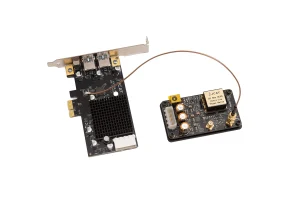
 Throughout my audio journey, I have been enthralled by the impact of the source on overall sound quality. Just four short years ago, I was scouring the market for a new set of speakers since I had gotten bored with my DIY mains (shout out to Jon Marsh, who designed the Natalie P speaker), but instead, I found that the speakers were not my problem, but my inadequate source and DAC holding them back. Although I had been warned NOT to go down the rabbit hole of audio tweaks, I did not listen, and I am undoubtedly proud of that decision! You will note that I will tend to harp about the importance of the digital source, as digital playback is far more than “everything being 0s and 1s,” no, all DACs most certainly do not sound the same for several reasons.
Throughout my audio journey, I have been enthralled by the impact of the source on overall sound quality. Just four short years ago, I was scouring the market for a new set of speakers since I had gotten bored with my DIY mains (shout out to Jon Marsh, who designed the Natalie P speaker), but instead, I found that the speakers were not my problem, but my inadequate source and DAC holding them back. Although I had been warned NOT to go down the rabbit hole of audio tweaks, I did not listen, and I am undoubtedly proud of that decision! You will note that I will tend to harp about the importance of the digital source, as digital playback is far more than “everything being 0s and 1s,” no, all DACs most certainly do not sound the same for several reasons.
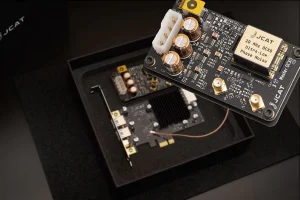
Now that I have gotten this perspective off my chest let’s discuss the JCAT USB XE card with clock input. Marcin of JCAT Audio sent me this card along with the JCAT custom OCXO clock, but initially, I wanted to test if it sounded better than his standard JCAT USB XE card. How do these cards differ?
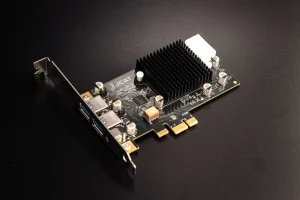
1. The Externally clocked JCAT USB XE is the duo of the JCAT USB XE card with JCAT Master OCXO installed.
2. The JCAT USB XE standard card is the original JCAT USB XE without external clock input and onboard Emerald OCXO.
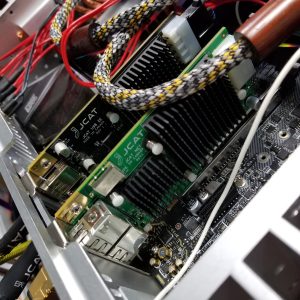
· The standard JCAT USB XE uses an Emerald OCXO onboard.
· The JCAT USB XE + clock board is essentially a JCAT USB card, all else equal, but with Emerald OCXO removed, with an input for a 20mhz clock input. There is a separately powered OCXO clock board you attach to the JCAT USB XE in this configuration.
· The Standard JCAT USB XE only requires one 5V DC input, while the JCAT USB XE with an external clock requires two 5V rails, one for the card and one for the clock.
To compare the standard JCAT, I tested several configurations:
1. JCAT USB XE (my reference, DC4 powered)
2. JCAT USB XE with JCAT Master OCXO board (Both DC4 powered).
3. JCAT USB XE with JCAT Master OCXO board (OCXO JCAT Nano powered).
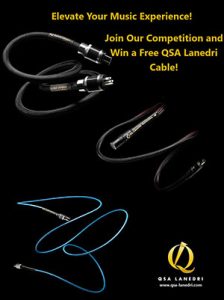 Comparing the JCAT with its re-clocked twin was very interesting. Both JCAT USB cards are susceptible to power. The better the power supply, the more rewarding the sound (I have tried five different power supplies. Compared to your standard motherboard-powered USB card, the JCAT /DC4 combination brings a much more detailed, musical, and lively musical experience to the table. It transformed my system from a “stereo” playing music to bringing me much closer to a real musical performance. Timbre is much more articulate, there is more slam, and the soundstage is noticeably bigger. Now, take everything about the standard USB XE and add a lot of precision, clarity, and spatial resolution. You will get the impression that the clock removes some bass, but you get more precise bass and improved bass control and definition. The entire presentation feels more effortless, less veiled, and more accurate.
Comparing the JCAT with its re-clocked twin was very interesting. Both JCAT USB cards are susceptible to power. The better the power supply, the more rewarding the sound (I have tried five different power supplies. Compared to your standard motherboard-powered USB card, the JCAT /DC4 combination brings a much more detailed, musical, and lively musical experience to the table. It transformed my system from a “stereo” playing music to bringing me much closer to a real musical performance. Timbre is much more articulate, there is more slam, and the soundstage is noticeably bigger. Now, take everything about the standard USB XE and add a lot of precision, clarity, and spatial resolution. You will get the impression that the clock removes some bass, but you get more precise bass and improved bass control and definition. The entire presentation feels more effortless, less veiled, and more accurate.
I experienced a wow moment returning from the externally clocked JCAT USB XE to the standard card. I always need to revert to the original reference to observe what happens and if any perceived gains go away when reverting. Upon closer listening, I heard a less controlled, albeit more “exciting” bass, although not as natural or accurate as the externally clocked JCAT card. I then asked myself, “Where did the guitars go?!”. The song I used has some noteworthy guitar chords (Fourplay’s – Bali Run), and the JCAT USB XE – Master OCXO duo brings all of this to the forefront with fantastic clarity and tone.
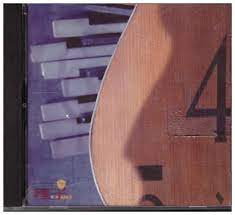 How did scenarios 2 and 3 compare? Yes, the power to the OCXO board does affect sound quality, and although the Nano did an admirable job, the Sean Jacobs DC4 did sound better. Since I already own the DC4, that would be a worthwhile move for all out SQ. I do, however, feel that experience with the JCAT Optimo Nano is still rewarding enough to bring the benefits of the OCXO board to the table substantially.
How did scenarios 2 and 3 compare? Yes, the power to the OCXO board does affect sound quality, and although the Nano did an admirable job, the Sean Jacobs DC4 did sound better. Since I already own the DC4, that would be a worthwhile move for all out SQ. I do, however, feel that experience with the JCAT Optimo Nano is still rewarding enough to bring the benefits of the OCXO board to the table substantially.
There is some potential here to talk about the DC cables used and how they differed. The cables tested were only swapped on the JCAT USB XE cards and were true regardless of which version of the card was used:
1. 15.5awg Mundorf CAW Angelique
a. Notes:
Slightly rounded vs. 2 or 3 but has a richer tone. It sounds larger than three and more mid-lower bassy than 2. It’s not as transparent/layered in presentation as either of the pure silver options). Excellent layering, 90% that of option 2. Post break-in, its plusses outweigh the technical deficiencies vs. option 2 (in my system).
2. 15.5awg Mundorf Silver/Gold
a. Notes:
 Perfect balance between resolution and musicality. It is probably the most “high-end” sounding of the three conductors in that it sounds ultra-refined and controlled. Loses some of the tonal richness of option 1. More clarity than 1 is about equal to option three but sounds larger than option 3. Super expensive, and with the advent of option 1, I find myself using it less and less since I’m a sucker for tonal richness.
Perfect balance between resolution and musicality. It is probably the most “high-end” sounding of the three conductors in that it sounds ultra-refined and controlled. Loses some of the tonal richness of option 1. More clarity than 1 is about equal to option three but sounds larger than option 3. Super expensive, and with the advent of option 1, I find myself using it less and less since I’m a sucker for tonal richness.
3. Duelund .5 Silver foil
a. Notes:
Excellent resolution and separation, especially with instruments and placement. It loses out on some lower bass slam than 1 and 2. It can lean toward the “dry” overdamped sound if you heard 1 or 2, but it sounds excellent—surprisingly good presentation for the cost. I hope to explore using it elsewhere.
So yes, the JCAT USB XE + JCAT Master OCXO duo is fantastic. It does come at a premium, but for those heavily invested in music servers, give this card and clock good power, and you’ll be in for a worthwhile and rewarding experience. Source matters!
![]()
![]()
Specifications:
Price: JCAT USB XE with Master OCXO Clock Upgrade: 1300 US
PCI Express USB Card for High-End Audio
Plug & Play in any PC or mini PC with a PCIe slot
Extreme sound quality improvement for any USB DAC or USB-DDC
State-of-the-art LT3045 linear regulators and filters eliminate noise interferences from a PC
Zero-switching power supply design
State-of-the-art ±0.005 (±5 ppb) stability Emerald OCXO (oven-controlled oscillator) delivers the most stable timing in the presence of environmental stressors such as airflow, temperature perturbation, vibration, shock, and electromagnetic interference (EMI)
Highest quality industrial grade components with operating temperature range from -40*C to +85*C
Next generation low latency & low noise ASM3142 USB 3.1 host controller
Gold plated high durability EMI shielded USB connectors
Two High-End USB Audio outputs supporting Low Speed (1.5 Mbps), Full-Speed (12 Mbps), Hi-Speed (480 Mbps) and Super-Speed (5 Gbps) data rates
Supports all lossless formats and sample rates
External PSU option eliminates computer as the source of power. For lowest noise and best sound quality use JCAT power supplies. (requirements for the PSU: 5V/1.5A min)
Both full-size and low-profile laser cut PCI-e brackets included
All x1-x16 lane PCI Express 2.0 slots supported
Supported operating systems: Windows (all editions), Linux, Mac OS (10.14 or later)
Stereo Times Masthead
Publisher/Founder
Clement Perry
Editor
Dave Thomas
Senior Editors
Frank Alles, Mike Girardi, John Hoffman, Russell Lichter, Terry London, Moreno Mitchell, Paul Szabady, Bill Wells, Mike Wright, Stephen Yan, and Rob Dockery
Current Contributors
David Abramson, Tim Barrall, Dave Allison, Ron Cook, Lewis Dardick, Dan Secula, Don Shaulis, Greg Simmons, Eric Teh, Greg Voth, Richard Willie, Ed Van Winkle, and Rob Dockery
Music Reviewers:
Carlos Sanchez, John Jonczyk, John Sprung and Russell Lichter
Site Management Clement Perry
Ad Designer: Martin Perry





Be the first to comment on: JCAT USB XE with Clock by Rob Dockery